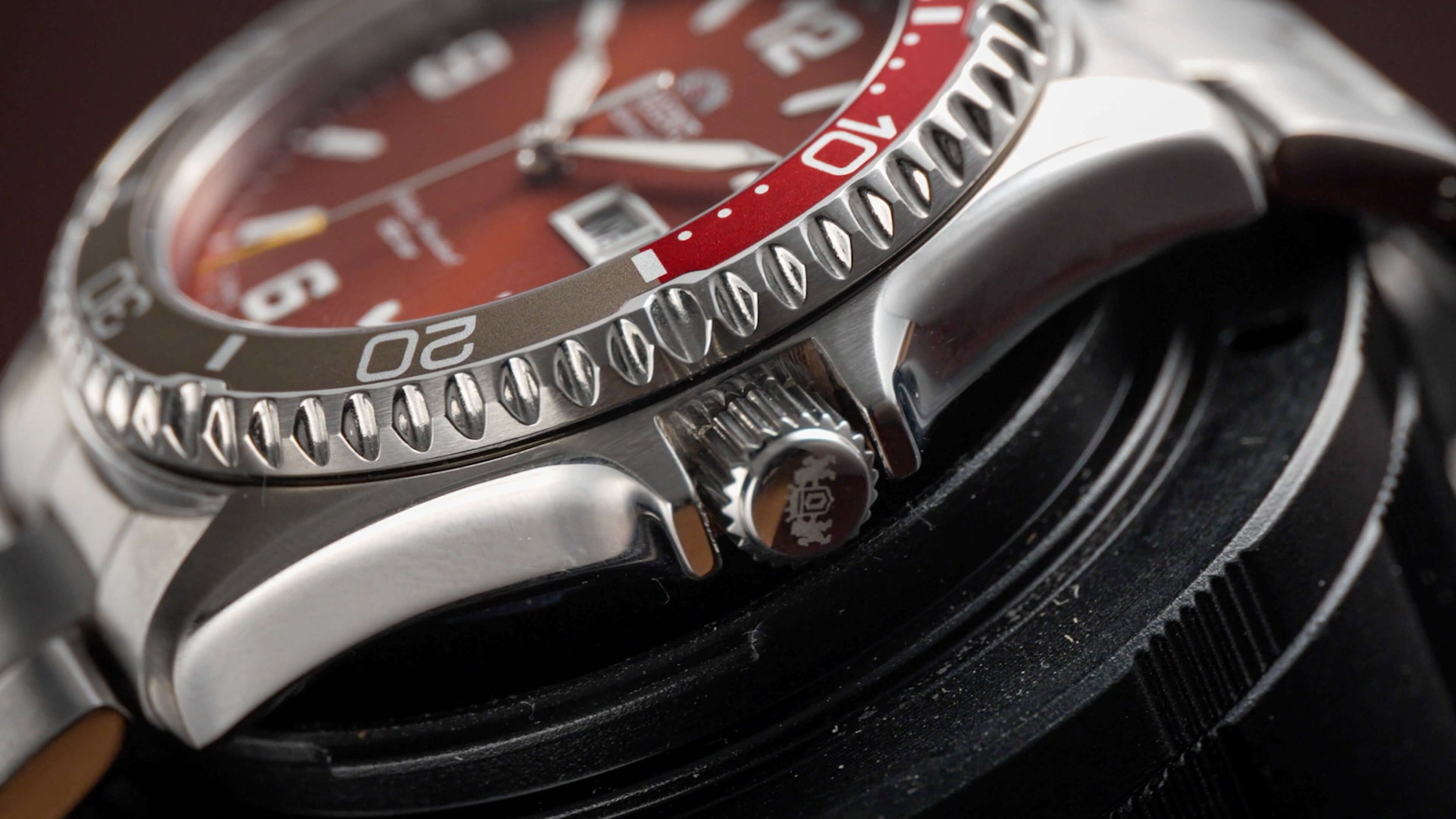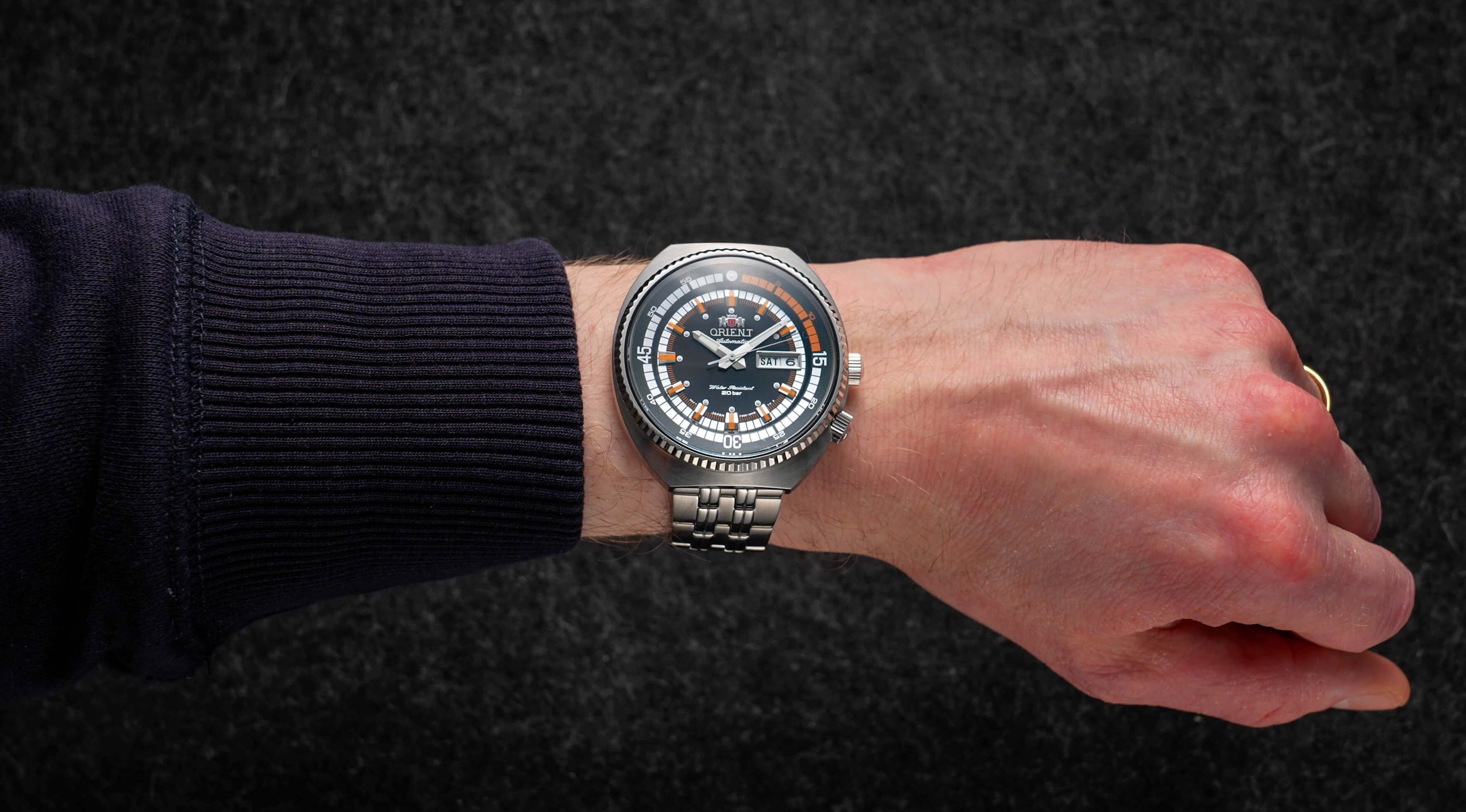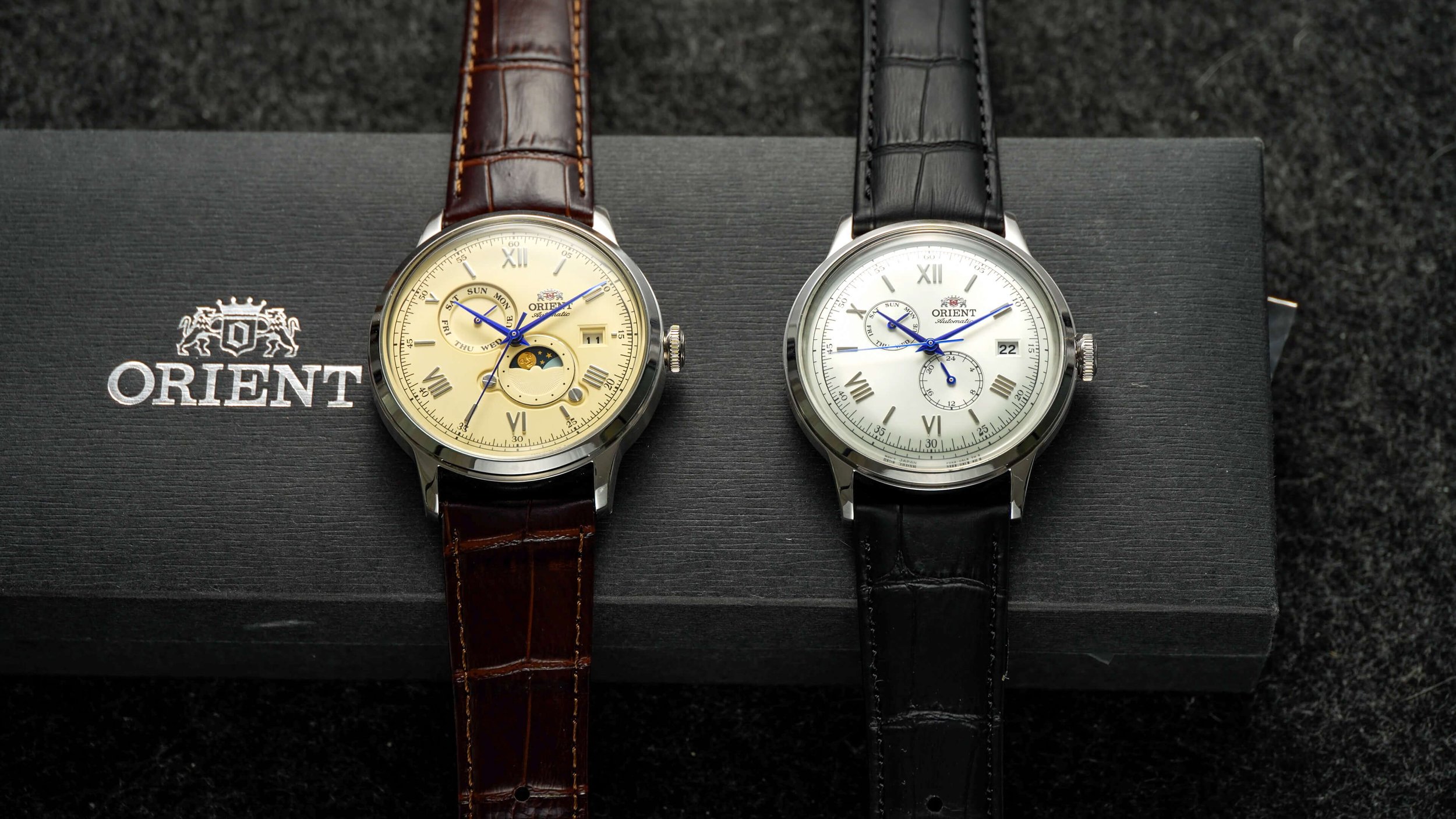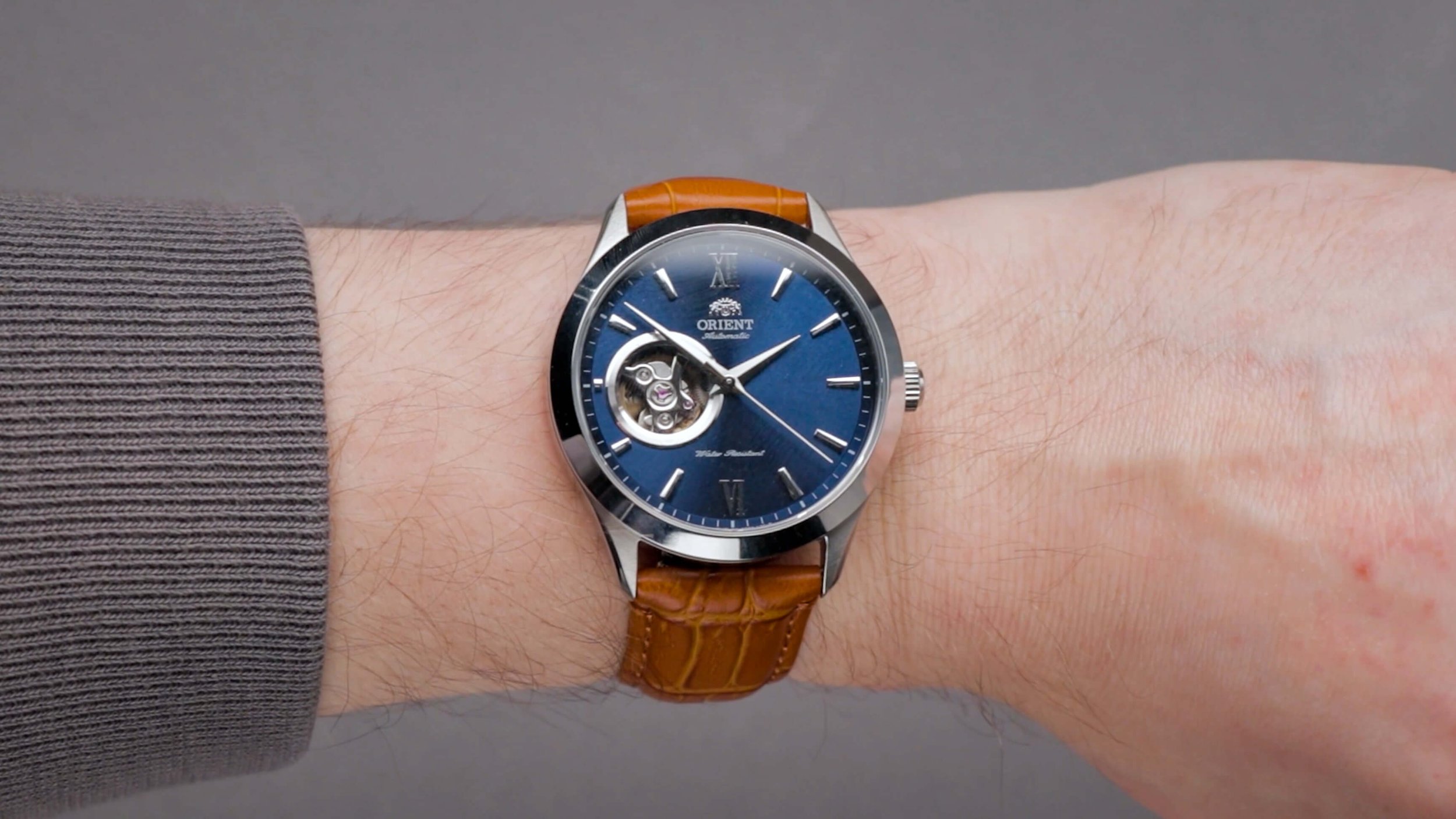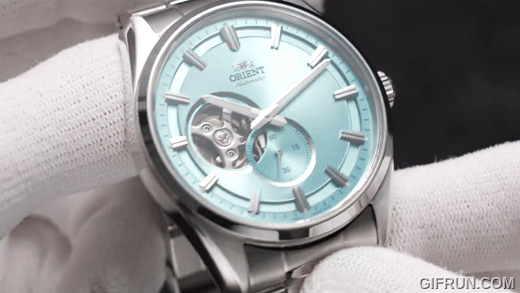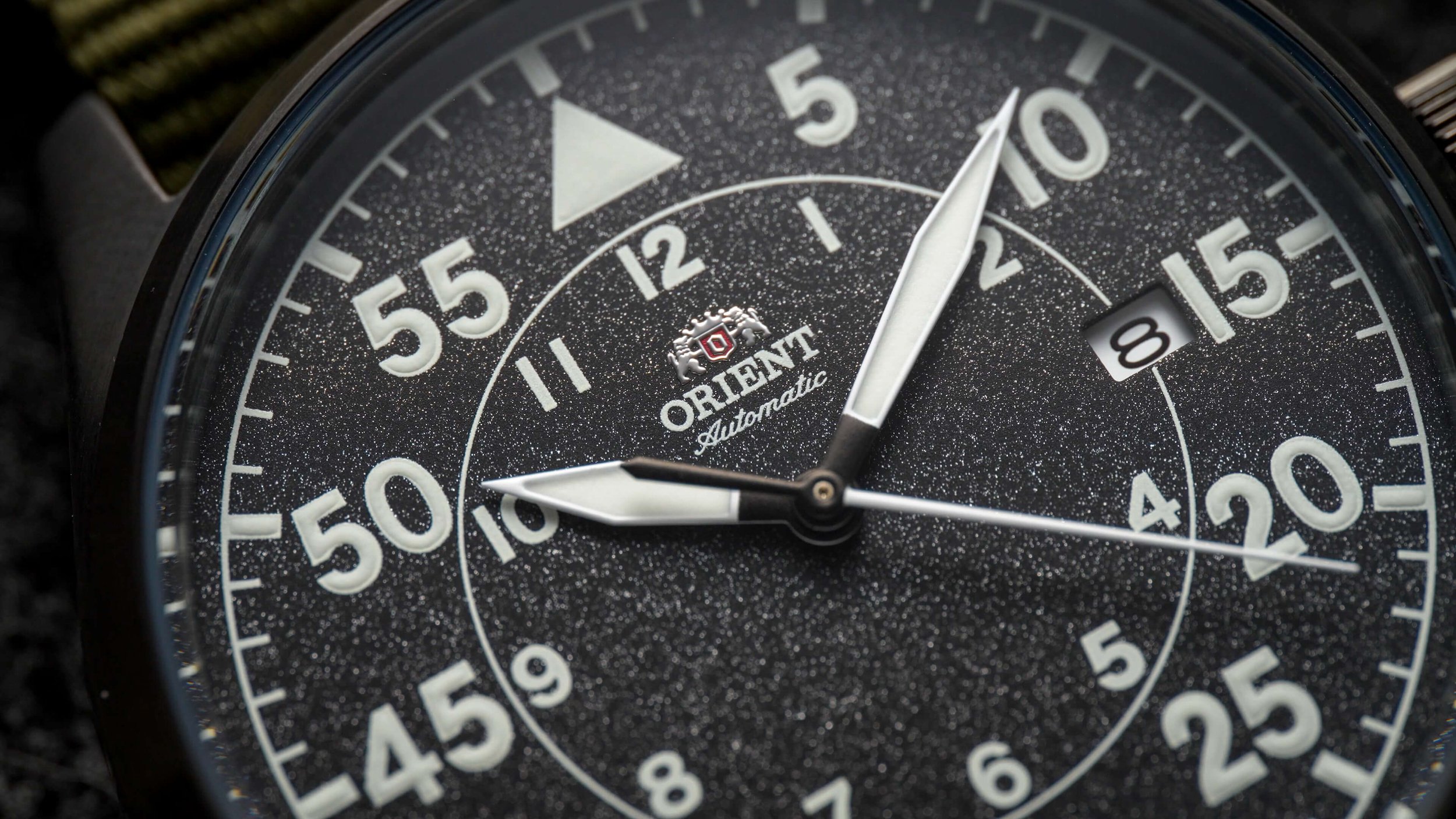The Best Orient Watches of All Time - Ultimate Line-Up Of Orient's Top Watches!
(This page features affiliate links, for more information click here.)
Orient might be the best low-cost watch brand. Hailing all the way from Japan, they’re a sister company of watchmaking juggernaut Seiko, as well as their high-end luxury off-shoot Grand Seiko.
I’ve reviewed dozens of Orient watches over the last few years, and while they’re not nearly as good as Grand Seiko, they nonetheless offer unique designs, punchy colors, and high-quality materials that often rival or beat the mainline Seiko watches for considerably lower prices.
But which Orient watches are truly the best? Well, thanks to Orient specialist TUS watches, I’ve explored the entire range to pick out what I think are the best value options in each category. We’ve got dive watches, dress watches, pilot watches, and even chronographs here for your viewing pleasure, some of which you definitely won’t have seen anywhere else. I’ll give you a brief overview of each, along with some pros and cons, and at the end of the article, I’ll even go over some Orient watches that I think are worth avoiding.
Orient Star, Orient’s premium line, will be saved for a separate list, as they command a higher price tag.
We have to start with dive watches, as that’s where Orient has received huge acclaim in recent times.
Best Orient Dive watches
Orient’s flagship divers are the Ray and Mako series. Traditionally, the Rays feature standard, lumed markers, while the Makos have some numbered indexes mixed in, though they’re functionally identical to one another. These days, there are several versions available, with different visuals and performance. Here’s what you need to know.
Orient Ray II & Mako II
Orient Mako II: 41.5mm Diameter, 39.9mm Bezel, 12.9mm Thickness, 47mm lug to lug
Orient Ray II: 41.5mm Diameter, 39.9mm Bezel, 12.9mm Thickness, 47mm lug to lug
The Ray II and Mako II were released simultaneously in 2016, making them among the most time-tested models on this list. Due to their high production quantity and age, these are also some of the lowest-cost Orient divers. While I can’t quote exact figures, as watch prices constantly fluctuate, they often retail for 30 to 40% less than the others I’ll be mentioning today.
Surprisingly, this lower cost doesn’t secure you a great deal less performance. These both retain the same strong 200m water resistance rating as the other models in the range, boasting true diver features like rotating bezels, screwed case backs, and threaded crowns. This rating is double the aquatic performance of most similarly priced Seiko divers, meaning the Mako and Ray 2 can cope with just about anything you throw at them. While these are older, they’re constructed well even by modern standards, with hardy stainless steel cases that feel great both in the hands and on-wrist.
Out of the two, I prefer the Ray II, especially the blue version, whose sunburst dial easily eclipses the matte black variant.
From the looks of it, these have each received minor tweaks to keep up with the times. Compared to footage from several years ago, the stock bracelets now have an additional micro-adjustment hole, while the Blue Ray II TUS provided appears to be marginally better finished than the Ray II I previously reviewed, with sharper edges and straighter flanks.
There are a few things worth mentioning here. Some models ship with a rubber strap, and while the strap was reasonably good, it was pretty long. So, if you’ve got a slim arm, I’d instead opt for the bracelet, which you can adjust to your needs. In fact, the bracelet is way better than I expected and just as good as those fitted to most more expensive Orient watches.
Due to having compact dials and tapered bezels that are substantially narrower than the case width, the Ray and Mako II also wear a touch smaller than other Orients with similar dimensions.
There are two main areas where these previous-gen models fall short: case finishing and crystals. Now, while the finishing has improved, they’re still quite simplistic, and they lack some of the fancy techniques used on other models. From a functionality perspective, the mineral glass used on these isn’t nearly as scratch-resistant as the sapphire that Orient tends to use on its newer releases, so expect this to get scuffed and scraped in the long run.
Mako III
Orient Mako III: 41.6mm Diameter, 40.3mm Bezel, 13.1mm thickness, 46.5mm lug to lug
Talking of newer releases, we haven’t yet seen a Ray II successor, but we do have a Mako III. I reviewed this one shortly after its release and was very impressed with how premium the watch looked straight out of the box. The burnt orange version, in particular, was far more striking and unique than the previous gen models, which did look somewhat run-of-the-mill. This model shipped with the aforementioned sapphire crystal, high-polish chamfers on the flanks, and a meatier, squared-off bezel, combining to make the watch look more upmarket.
Overall, the move was successful, and for the most part, the Mako III is better than the Mako II. That said, if you’re after a huge uptick in finishing or materials, you won’t find it here. Outside of the crystal, the Mako III is built similarly to its predecessor, with the main improvements coming via cosmetic alterations. Of course, this makes it highly subjective. I’d take this over the Mako II for the extra money, but I’ll let you decide for yourself.
The Mako III comes in a wider range of more vibrant colors than the more conservative Mako II, with the only minor downside being reduced clarity due to the sapphire crystal being hazier than the mineral and lacking a top-tier anti-reflective coating to mitigate it.
Mako Sport
Mako Sport: 39.8mm Diameter, 38.9mm Bezel, 12.8mm Thickness, 46mm lug to lug
That said, if there were one Mako-branded watch I’d recommend, it’s this: the Orient Mako Sport. Also known as the Mako 40, in reference to its size, the Sport model had a controversial launch, where the entire launch lineup initially shipped with a faulty chapter ring, where the space between the second markers was completely messed up. Fortunately, Orient has since corrected the issue, and I’m glad they did because this model was arguably my favorite release of the year.
As with the Mako III, I have done a full review of this model, but in short, the Mako Sport is a slightly smaller Mako variant, which comes with a case-matched bezel and a glorious, sleek dial with a compact date wheel and presented in a stunning array of classy colors (purple, salmon, blue, black and white). It also drops the crown guards to form a sexy sport-dress hybrid that would look right at home alongside far more expensive brands. Out of those available, my favorite is probably the purple version, though the white version also looks much better than the stock images, with an unexpected sunburst all of its own.
With the chapter ring issue fixed, the only notable nag is the 20mm bracelet and strap. The bracelet, while good quality like the others, isn’t very well integrated and doesn’t taper towards the clasp, meaning it looks a little out of proportion, considering the reduced nature of the piece. The leather bands that some versions ship with are absolute garbage.
Still, I think this is the best Orient watch to date, as well as the most versatile, so if you take one thing away from this post, check out the Mako Sport and see what you think. Other brands would be charging a grand for this.
Kamasu V1
Kamasu V1: 41.6mm Diameter, 40.3mm Bezel, 13mm Thickness, 46.5mm Lug to Lug
Perhaps the only model in with a shout of beating the Mako Sport is the Kamasu. This model looks just like the name suggests, with an aggressive shark-inspired design featuring tapered, tooth-like hour markers and an extra pointy handset, presented in an array of vibrant tones that leave little to be desired, some with color-matched bezels, others without. Under the hood, this is essentially the same as the Mako III, so most of those points apply here, too.
This watch proved extremely popular straight out of the gate, likely due to the striking, unique design, which was a departure from Orient’s historically more conservative styling. When Seiko started pulling out of the sub-£200 space a few years ago, the mantle of ‘best affordable diver’ easily rested on the Kamasu’s shoulders.
Possibly due to the punchier dials, the Kamasu suffers less from the sapphire glare issue impeding the similar Mako III, and I’d say the more substantial applied indexes on the Kamasu even provide a higher quality aura when looked at up close. While not an old watch, it’s typically available for less than the newer Mako III with identical proportions and materials. Thus, it competes with the fantastic Mako Sport in price to performance.
So far, I’ve tried three colors: green, navy, black and red. It’s funny because the burgundy one boasts the most luxurious and arguably dressiest appearance, yet is probably the one I’d reach for last. It’s got a glorious, high-contrast sunburst, which humbles the others, but it ships with a divisive plain black bezel that I’m not entirely on board with. While more subdued, the remaining pair are more cohesive and will probably stand a better chance of fitting your wardrobe. My pick is probably the teal green, with the blue being the safest bet.
As well-rounded as the Kamasu is, it shares some minor downsides with all the models I’ve mentioned so far. Their bezels tend to have a little back play and lack the tactile sound and precise feel of some rival brands. Their low light performance, while reasonable, also falls short of Seiko and Citizen.
Nevertheless, these watches do share the same great in-house movement. Specifically, the Orient Calibre F6922, which is widely used across the product stack. It’s comparable to the Citizen Miyota 8000 series and the Seiko NH series in terms of performance, but with superior accuracy and a significantly quieter rotor than the Miyota, in particular.
From my experience, Orient’s quality control is also better than Seiko and Citizen on these lower-cost pieces; something that’s often overlooked with so much focus on on-paper specifications.
Due to the case sharing I mentioned before, it’s also worth noting you can swap bracelets between certain models. For example, Mako III bracelets will work with the Kamasu and vice versa.
Kamasu V2
Kamasu V2: 41.6mm Diameter, 40.3mm Bezel, 13mm Thickness, 46.5mm Lug to Lug
Speaking of case sharing, I always had the impression that the Kamasu V2 was a bigger watch than its predecessor from the stock images. However, it turns out that, again, it’s near-identical, with the only change coming via brushing on the flanks of the watch.
Don’t worry if you’re after something larger; I’ll be with you in a second.
On the other models sharing this case, the high-polish chamfer struggles to distinguish itself from the already polished flanks. Here, the lip is much more clearly defined due to the alternating finishing, which gives the illusion of a slightly slimmer case.
The dial here is an absolute banger, too. TUS sent over this gorgeous Teal version (also available in red) with a beautiful gradated finish that works perfectly with the faux patina lume surrounding it. It’s way more vivid than the Teal Kamasu V1 and looks fancier from a distance, making it my preferred pick, at least for that color. In essence, the Kamasu V2 is a halfway house between the Ray and the original Kamasu. It’s got the Kamasu handset and case, combined with a more traditional marker array closer to the Ray or the likes of the Rolex Submariner.
My only gripe with this one is that the lume on the hands is yellower than that on the markers, but I wouldn’t say it’s annoying enough to throttle its appeal. The Kamasu V2 is another one of those pieces that your friends will probably think you spent a lot more on.
Orient Triton
Orient Triton: 43mm Diameter, 41.1mm Bezel, 13mm Thickness, 51.3mm Lug to Lug
While I like brands releasing variants of the same surefire hit, I perhaps prefer it when they start to experiment. That’s where the Triton comes in. On the surface, it’s akin to the Kamasu V2, which is perhaps where my previous sizing misconception was founded; however, when side by side, you’ll see the Triton is a considerably larger beast.
Left: Kamasu V2 Right: Orient Triton
Its 43mm diameter commands considerably more wrist presence, though I wouldn’t call it huge, as the lug-to-lug is shorter than some other big dive watches I’ve encountered, and the piece is just as slim as the rest, at only 13mm.
Unlike those, however, the Triton has a Seiko-style layout, with the crown positioned at 4 o’clock. While there’s a wide catalog of Tritons available, this green and orange version is comfortably the most unique, with a quirky case color that gives an aged, almost bronze look to the steel housing.
Within is also a different movement, the caliber F6722. I say ‘different,’ but the performance and specs are as close to the F6922 as makes no difference. I’m guessing the stock bracelet is like all the previous ones I just mentioned, though this particular model ships a NATO strap instead, which is fair for the money and comes with keepers and a buckle that perfectly match the unique case tone.
On this strap, the watch is quite comfortable and doesn’t look nearly as ungainly as I expected, partly because this is proportionally one of the least chunky of the bunch, given its wide yet slim case. I’d surprisingly be tempted to take it on the strap over the bracelet.
Orient Kano
Orient Kano: 44mm diameter, 50mm lug to lug, 44mm bezel width, 12.9mm thickness
There are some others worth considering if you have a bigger arm. First up is the Kano. At 44mm, this is Orient’s largest readily available dive watch and feels like another step up in size from the Triton, partly due to the far larger bezel, which spans the entirety of the case.
The main reason the Kano never received a great deal of fanfare is because it was overshadowed by the highly popular Kamasu, which launched alongside it and shipped with a better crystal. Frustratingly, the Kano is resigned to only mineral, meaning it’s specced closer to the older Ray and Mako II; luckily, it’s usually priced to reflect that, at a cost similar to those last-gen models.
The similarities extend to the case, too. While the Kano is significantly larger, its case shape and finishing are most reminiscent of the Ray and Mako II, with simple, albeit well-cut edges.
My wife has always had a soft spot for this watch, despite the fact it’s far from fitting her husband. I’ll have to get the weights out, boys! But yeah, it is quite good-looking, especially considering the large size, which can sometimes look cumbersome.
Unlike the others, it lacks a lume pip, which is a shame, as functionally, it’s arguably the best bezel of the bunch, with the tightest, securest action.
Neo Classic
Orient Neo Classic: 43.7mm diameter, 42.3mm bezel width, 46.6mm lug to lug, 13.9mm thickness
That said, my favorite of the larger divers is the Orient Neo Classic. Despite being an on-paper disappointment, with only a mineral crystal, I think its distinctive retro dial and delicious color palettes flew far under the radar on social media when this watch launched in 2022. To me, this is like a better thought-out version of the SK Diver reissue that I tore apart a few years back. The Neo Classic has a similarly busy yet far less garish dial, paired with a much sleeker case and substantially higher build quality in every department. Unlike the SK reissue, the Neo Classic boasts the full 20bar water resistance rating, which we’ve come to expect from Orient divers, and it also features an infinitely better bracelet that could do with some more adjustment holes but is just about usable.
One thing I did like about the SK diver has at least been carried over to the Neo. The lower crown can be used to rotate the internal bezel, a refreshing change of pace from the ever-present ratcheting external bezels.
Size-wise the Neo Classic hits 43.7mm across the middle, though its barrel-like shape results in a short 46.6mm lug-to-lug, meaning it’s slightly more “wristable” than the previous two.
Essentially, the Neo Classic gives you the feel of a funky retro watch, but in modern packaging. Its styling is most similar to the rare ‘King Diver’ Orient from the 1970s, though it has received minor alterations for modern audiences.
It’s got one fatal flaw...availability. You see, it’s mostly available on grey market sites, which indicates the watch may be discontinued, at least in some colors, so time may be ticking on the Neo Classic.
Of all the Orient dive watches I’ve tried, here they are in order of preference:
Best Orient Dress Watches
The other category where Orient excels is dress watches. They have a wider selection than McDonald’s has e-numbers, so it can be tricky to decipher what the differences are and which are actually worth your time.
Orient Bambino Range
Orient Bambino V2: 40.5mm diameter, 46.2mm lug to lug, 11.8mm thickness (with crystal)
Orient Bambino V3: 40.5mm diameter, 46.2mm lug to lug, 11.8mm thickness (with crystal)
Orient Bambino 38mm: 38mm diameter, 44m lug to lug, 12.5mm thickness (with crystal)
The Bambino range is the first obvious point of call here. These are some of the most lauded pieces on social media and rightly so, as they offer classic designs that tend to look much more expensive than they actually are. Now, I’ve covered a few of these in depth before, so let’s quickly whizz over them.
The original Bambino lineup includes a range of 40.5mm watches. Of these, I’ve looked at the V2 and V3 so far. According to Tom at TUS, the V2 is the best selling model, with vintage styling, incorporating a super slim handset and a pocket watch-esque chapter ring. The V3, on the other hand, is a Bauhaus-inspired minimalist watch. Character is where the Bambino’s shine, with heavily domed crystals and curved dials atop wafer-thin cases, making them a great match for more formal attire.
Despite the aesthetic variance, performance-wise, most of these models are identical, with the same cases and movements. As with the dive watches, you can expect good performance and on our timegrapher, these dress Orient’s ended up being some of the most accurate I’ve ever tested.
The main disadvantages of the Bambino models are the straps and crystals. It’s supposedly quite expensive to make sapphire crystals that dome this heavily, so their use of the lesser-performing mineral glass is somewhat understandable, however, most watches at this price do use the former, which is far more scratch resistant. While stylistically appropriate, the straps feel quite plasticky, despite being made primarily of genuine leather. They’re also an awkward size, due to the odd 21mm lug with, meaning replacement strap options will be more limited. They aren’t unusable by any means but they do pull back the high-end curtain a little.
It’s also worth mentioning that some V6 Legacy Bambinos, ship on a bracelet instead, if you’d rather forego the leather strap.
Aside from that, some wearers complain at the shortness of the hands on the V3, as well as the sizing of the 40.5mm variants, which are large considering the mid-century styling.
That’s where the Bambino 38mm version comes in. This one was a far more recent release and it’s very much the same goodness, just downsized.
From the two I tested, I’d go for the silver dial one, rather than the underwhelming cream version, though there are two other colors available as well (black and gold case). If you’ve got an average or slimmer arm, the Bambino 38 is the no-nonsense choice, you can thank me later.
Bambino Sub-Seconds
Bambino Sub-Seconds: 40.5mm diameter, 46.2mm lug to lug, 12.1mm thickness (including crystal)
My favorite of these is certainly the sub-seconds Bambino, which ships in a classy champagne color that looks head and shoulders above the stock images.
It really does look like a vintage watch, perhaps even moreso than the Bambino V2, with the size being the only thing that reveals it’s modern construction...that and the exhibition rear, which provides a peek at the automatic movement within.
Bambino With Subdials
Orient Bambino with subdials: 40.5mm diameter, 46.3mm lug to lug, 12.7mm thickness
Orient Bambino Sun and Moon: 41.3mm diameter, 46.9mm lug to lug, 14.3mm thickness (including thickness)
In a similar vein, there are these pair. The Bambino Sun and Moon and this other one which doesn’t seem to have a nickname yet. The latter is pretty much a Bambino V2, but with some additional complications on the dial and a glass caseback; it’s got somewhat of a pocket-watch vibe, so if you like subdials, it could be an option.
The Sun and Moon looks relatively similar from above, though from side on, you’ll see it’s a tad thicker, with a taller bezel and it boasts an extra degree of dial complexity, such as the day-night complication and a heavily recessed day indicator, giving this model perhaps the deepest overall appearance out of any of the dress watches.
Best Minimalist Style Orient Watches
Orient Maestro
Orient Maestro Quartz: 38.8mm Diameter, 45.5mm lug to lug, 9.5mm thickness
Orient Maestro Automatic: 39.9mm Diameter, 46mm lug to lug, 12mm Thickness
Probably the cleanest and simplest offering from Orient, the Maestro is essentially an answer to the heavily promoted fashion brands that influencers have been peddling for the past half-decade. Only difference is these aren’t awful quality. It comes in both quartz and automatic, with each carrying forth a stripped down design, with limited text and tasteful dials that are clearly designed for the fashion-conscious.
Orient may be known primarily for its mechanical timepieces, but I’d recommend considering the quartz here, which has compact proportions, such as a 38.8mm diameter and a mere 9.5mm thickness. This version can be bought on a pretty decent mesh bracelet for a chunk less than you’d probably think and I think the colors are more enticing. The automatic has slightly better case finishing and looks very similar, but has a more contemporary 39.9mm width, which could be a better fit for many of you reading.
Unlike most Bambino models, I reckon you could pull the automatic off with a hoodie just as well as a tuxedo, thanks to the super-safe visuals. Surprisingly, the Maestros also have more water resistance than the Bambino models, at 5 bar, though the crystals are still only mineral, which is frustrating versus the competition.
If you’ve considered the likes of Daniel Wellington or MVMT, either option will nonetheless provide you with better build quality and design, usually for a comparable price tag or less.
Orient Numeral
Orient Numeral Dress Watch: 42mm Diameter, 48.5mm Lug to lug, 11.7mm Thickness
Another option you may stumble across is this unnamed version, which appears really similar online. Sometimes listed under the ‘contemporary’ banner, I think this is a variant of the semi-popular Orient symphony, as it shares the same case and materials. I never bothered covering the regular Symphony, as its aesthetic is extremely close to the Maestro already, though this version has a few discrete characteristics, such as the Roman numerals and the raised chapter ring.
The standout feature of this dress model is the dial. It’s got probably the cleanest silver sunburst of all the watches on this list, which you’d never expect from the flat stock images, which suggest a matte white appearance instead.
At 42mm, I think it’s a little large, considering the vintage cues, but it doesn’t wear so massive, as the lug-to-lug is a more restrained 48.5mm. It’s reasonably slim, at 11.7mm, including the slightly raised crystal. There aren’t a huge number of these classically styled automatic pieces available at this price, so while I don’t love this piece with its mineral crystal, it’s still one of the better choices.
Orient Open Heart 38.5mm
Orient FAG Open Heart: 38.5mm diameter, 44.9mm lug to lug, 10.9mm thickness
For something more adventurous, an exotic skeleton or open-heart watch could add the flair you’re looking for. There are two I’ve encountered that are worth mentioning. First is this unspecified open-heart model, which was pretty decent overall. It comes with a sapphire crystal, unlike the other dress models, and gives a sneaky view of the movement within.
While its diameter is closest to the 38mm Bambino, its thicker bezel, flat crystal, and chunkier case give it a completely different vibe and profile.
Orient Open Heart 41mm
Orient Open Heart Dress RA-AR: 41.1mm diameter, 48.2mm lug to lug, 11.2mm thickness
There’s also this larger and arguably more attractive offering, which I again reviewed back in 2021. At the time, only this black dial was available. However, Orient has recently revamped the line with a string of lively colors (red and green), such as this shiny ice blue, whose spiral sunburst is far more exciting than the similar, yet much plainer, Tiffany dials used on many alternative watches.
While more expensive than the previous one, this model is visually more complex, with applied markers traversing a cutaway that runs the circumference of the watch, as well as an unusual sub-seconds complication that overhangs the open heart window. Again, this one has a sapphire crystal and an exhibition rear.
The main thing missing is a decent name, as again, Orient has left the Western market with a string of digits that even Alan Turing would struggle to remember. If you have a relatively big arm, it’s an interesting choice nonetheless.
In addition to their dress and dive watches, Orient does make some other types of pieces, albeit in more limited numbers than other, larger Japanese watch brands.
Best Orient Military Watches
In terms of military watches, Orient has two that are worth considering.
Defender II
Defender II: 42.5mm Diameter, 49.5mm lug to lug, 12.5mm thickness
First in line is the Orient Defender II. Now, I have to be honest, I think this thing is pretty ugly. However, many online commenters seem to think differently, so I felt compelled to include it regardless. This is about as close to a decent field watch that you can get with Orient, though it retains a lot of pilot watch cues, with a two-tone handset and an assortment of highly visible indexes spanning the circumference. It also has the traditional aviator sizing, with a wide 42.5mm diameter and 49.5mm lug-to-lug that demands your attention.
I’ve encountered many PVD watches before, and the finishing on this version sits towards the shinier end of the spectrum, though it may prove more resilient than you’d expect if the results of our case scratch test video were anything to go by.
It’s not a poorly made watch; it has most of the good features of the other watches. If you like the look of it, go wild, but there’s another model I’d try and get instead.
Pilot
Orient Pilot: 42.5mm Diameter, 49.5mm lug to lug, 11.5mm thickness
That being the Orient Pilot. It’s part of the same collection, as you can see from the similar case and identical strap, but it has a cleaner look with less clutter, nicely inked numbers, and a flecked dial surface that makes it feel more upmarket. It’s also slightly slimmer than the Defender, which never hurts.
The 22mm nylon band used by both models, by the way, is serviceable with color-matched appendages. Low light performance on the Pilot and Defender is also solid, partly due to the huge markers.
Like the Defender, the Pilot comes in more mainstream case materials and in a range of alternate dial colors, though this darker one looks better than I anticipated before ordering.
While it’s good-looking in isolation, the main concern with the Orient Pilot is competition. Its rather standardized design is offered by many other budget watch brands, some of whom provide improved specifications for less money, though returns procedures and warranties are generally more straightforward with Orient.
Best Orient Chronograph Watches
Orient Mako Chrono Solar: 42.5mm Diameter, 40mm Bezel, 47.9mm lug to lug, 13.2mm thickness
Now, there are sadly very few Orient chronographs to feature in a list like this, with the only notable inclusion being the Mako Solar Panda. As you can see, this carries across many traits from the Mako 3 and Kamasu series I mentioned earlier, including the bezel and case shape, though it’s bumped up to 42.5mm across, with a lug-to-lug of 47.9mm.
To my knowledge, this is the only solar model in Orient’s current lineup. It’s powered by a Seiko Epson VS75, which is one of the few quartz chronographs with a semi-sweep that matches the smoothness of a mecha-quartz. I’d love to see them make use of these rechargeable movements more often, especially in place of standard quartz, as the six-month battery life when charged makes them a highly practical choice.
Unlike some diver-inspired chronographs, this one maintains the strong performance and functionality of the regular diver models, with a proper screwback and a screw-down crown. Of course, this is far from the only panda chrono out there, with the design being a mainstay of the watch industry. The most interesting parts of this one are the lumed markers, which offer up a quirky pale blue tone, as well as the heavily recessed subdials, whose cutouts are lined with high polish chamfers to play with the light.
A minor nitpick of mine is that the luminous hands don’t accurately match the markers, and while that’s forgivable on faux patina watches, where it can emulate the differing deterioration rates of lume, on a fresh design like this, it doesn’t fit quite so neatly. Still, the Orient Panda is an attractive watch overall, and if you don’t like the monochrome design, it is purchasable in other colorways (black and pepsi) that match the other Mako watches.
ORIENT WATCHES TO AVOID
Now, while Orient watches are generally a safe bet, with some leeway for subjectivity, there are also some models that I think are still worth avoiding.
Orient SK Diver Reissue
First up is the SK Diver Reissue. Now, I alluded to this one earlier, so I’ll keep it brief. I think this one is hideous, and I think if you’re after a retro watch, you should consider the Neo Classic instead. Nevertheless, many commenters on my review disagreed and thought it was gorgeous. Even if the latter is true for you, it’s still worth considering that this watch is built really poorly. The finishing is below par, the head of the watch is huge and heavy, and the water resistance is a measly 5bar.
What’s worse is the bracelet may as well have come off a $20 Casio. It’s far too light and made of folded links, meaning the weight balance is completely off when on the wrist. It doesn’t even integrate with the case whatsoever and has been left with a rubbish clasp that will likely leave you in the lurch. If you really want that one, just don’t submerge it and factor in the cost of a better band, albeit not a NATO-style one, as that will balloon the thickness even further.
Orient Tristar
A whole series worth avoiding nowadays is the Tristar collection. A mainstay of budget collectors in days past, the Tristar collection has effectively been culled by Orient, with the last update coming many years ago. These days, their low-tier materials, dated designs, and uncompetitive prices mean they’re completely outclassed by other budget watches, especially those from AliExpress.
Perhaps Orient lacks the resources to support or upgrade the Tristar in a similar manner to the Seiko 5 series, but even so, they’re bang average in the 2020s. Maybe we’ll see these make an illustrious return in the near future.
Limited Edition ‘Scalper’ resellers
If you thought the Tristars were poorly priced, you should see what’s happening on marketplace sites. Indeed, on sites like eBay, you’ll often find greedy sellers attempting to flip limited edition Orient watches for double or triple their RRP. I’m gonna be straight with you, Orient watches are decent, but they’re not worth £600! At that price, you could instead buy an Orient Star, or some other higher-end brand instead. If you start buying at these inflated prices, these rats will keep appearing in droves.










